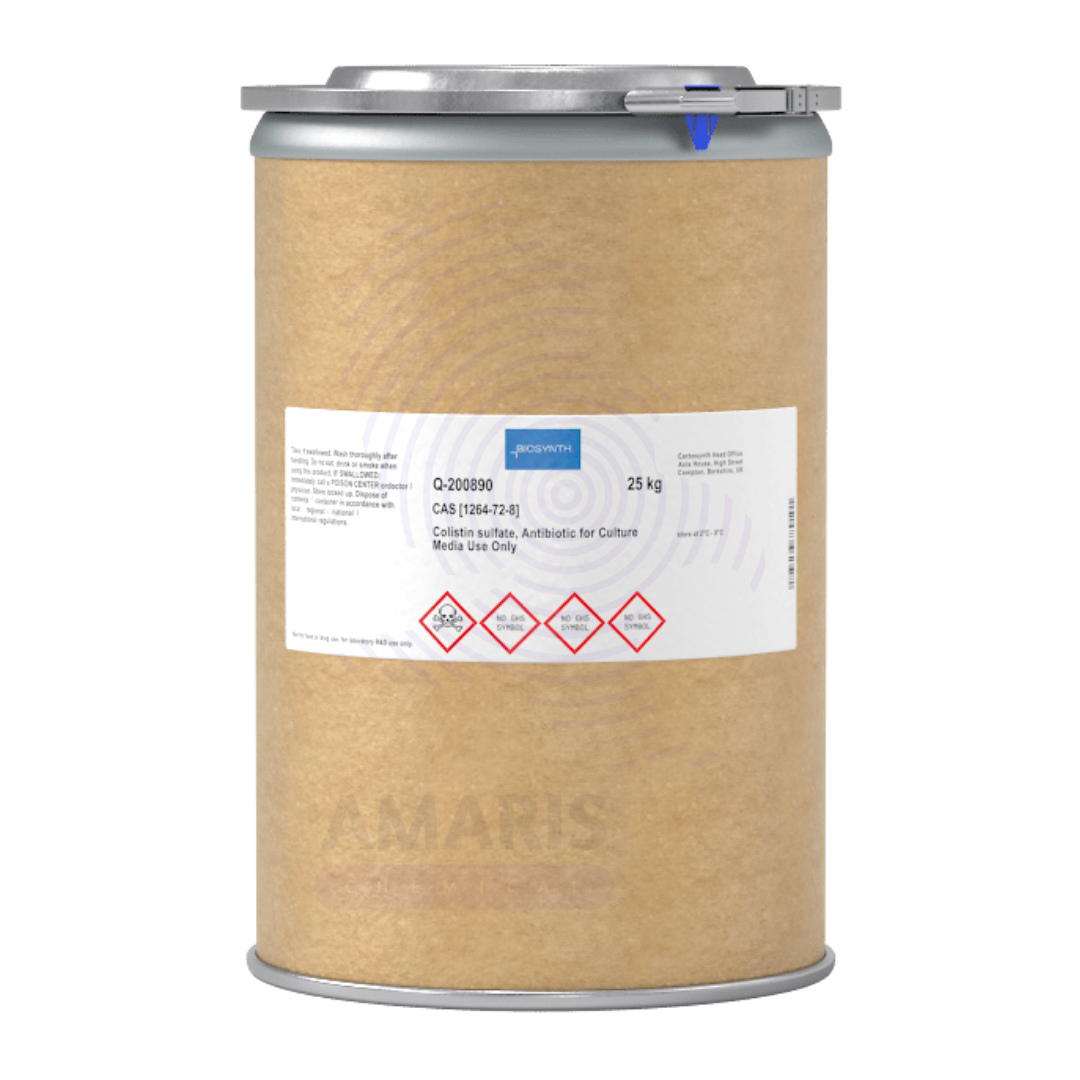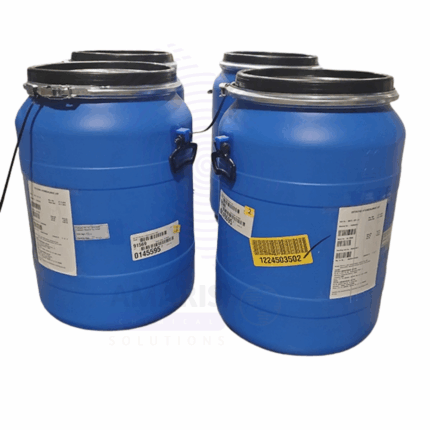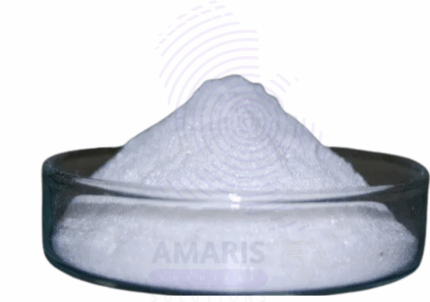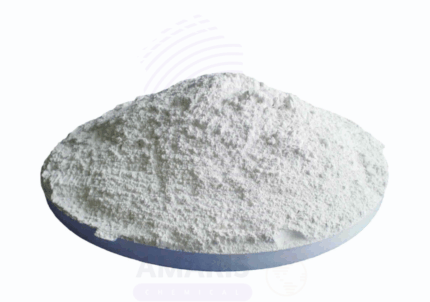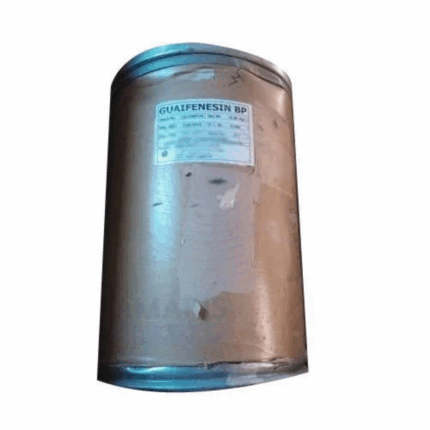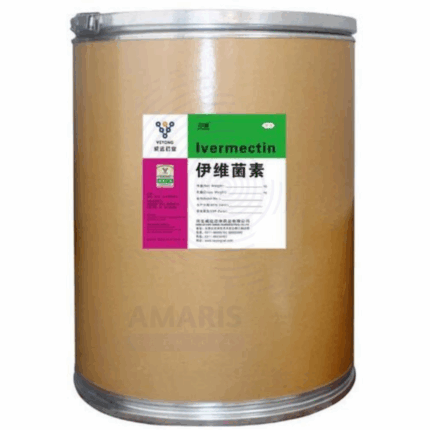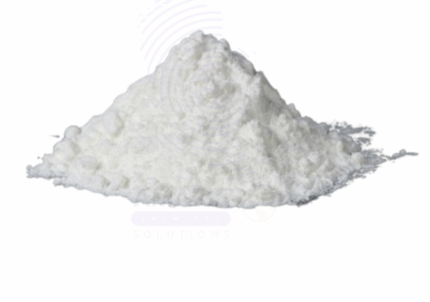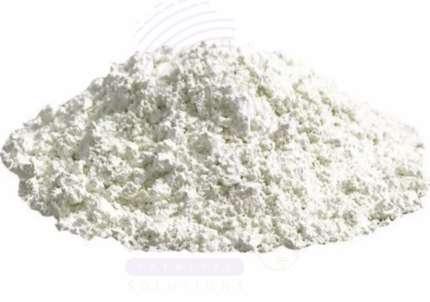Colistin Sulphate BP
Colistin Sulphate BP is an antibiotic belonging to the polymyxin class, derived from the bacterium Paenibacillus polymyxa. It is a white to pale yellow powder, soluble in water, and used primarily for its potent bactericidal activity against Gram-negative bacteria, including multidrug-resistant strains. Colistin Sulphate BP is used in both human and veterinary medicine, often as a last-resort treatment for serious infections caused by multidrug-resistant Pseudomonas, Acinetobacter, and Klebsiella species. Due to its efficacy and narrow therapeutic index, its use is carefully monitored. The “BP” denotes compliance with the British Pharmacopoeia standards.
Colistin Sulphate BP
Primary Uses
- Human Medicine
- Used as a critical antibiotic for treating serious infections caused by multidrug-resistant Gram-negative bacteria, including pneumonia, bloodstream infections, urinary tract infections, and sepsis.
- Administered orally or by inhalation for intestinal decontamination and respiratory infections, respectively, and by injection or nebulization under clinical supervision.
- Often reserved for cases where other antibiotics have failed due to its toxicity profile and potential for resistance development.
- Veterinary Medicine
- Employed to treat infections in livestock and poultry caused by Gram-negative bacteria.
- Used as a feed additive or therapeutic agent under strict regulations to manage bacterial infections and promote animal health.
- Plays a role in preventing and controlling enteric infections, especially in pigs and poultry farming.
Secondary Uses
- Research & Development
- Utilized in microbiological research as a selective agent in culture media to isolate and study Gram-negative bacteria.
- Investigated for novel drug delivery systems and combination therapies to enhance efficacy and reduce toxicity.
- Agricultural Applications
- Occasionally explored for soil treatment to manage bacterial contamination, though use is limited due to environmental and resistance concerns.
1. Basic Identification Attributes
- Chemical Name (IUPAC): Mixture of polymyxin E1 and E2 sulfate salts
- Common/Trade Name: Colistin Sulphate BP
- CAS Number: 1264-72-8
- HS Code: 2941.00.00
- Molecular Formula: Variable mixture (complex cyclic peptides)
- Synonyms:
- Polymyxin E Sulfate
- Colistin
2. Physical & Chemical Properties
- Physical State: Fine, white to pale yellow powder
- Color & Odor: Pale yellow; almost odorless
- Melting Point: Decomposes before melting
- Solubility: Soluble in water (freely soluble in dilute acids)
- pH (1% solution): Typically 4.5–7.5
- Stability: Stable under recommended storage; sensitive to light and moisture
3. Safety & Hazard Attributes
- Hazard Class (GHS): Harmful if swallowed, skin irritant, eye irritant
- NFPA Ratings:
- Health: 2
- Flammability: 0
- Reactivity: 0
- Exposure Limits: No specific occupational exposure limit, but use with caution to avoid inhalation or skin contact
- Toxicity: Nephrotoxic and neurotoxic at high doses; monitor therapeutic levels strictly
- Reactivity: Stable under normal conditions
4. Storage & Handling Attributes
- Storage Conditions: Store in a cool, dry place away from light and moisture
- Container Type: Airtight, moisture-proof containers or pharmaceutical-grade packaging
- Shelf Life: Typically 2–3 years under proper storage
- Special Handling: Use gloves and mask; avoid inhalation of powder; handle in well-ventilated areas
5. Regulatory & Compliance Attributes
- BP Compliance: Meets British Pharmacopoeia quality standards
- FDA Status: Approved for specific medical uses; strictly prescription-based
- Veterinary Regulations: Use regulated by authorities to limit resistance development
- Transportation: Classified as non-hazardous for transport under normal conditions
- Waste Disposal: Dispose as pharmaceutical waste per local regulations
6. Environmental & Health Impact
- Ecotoxicity: Potentially toxic to aquatic organisms; avoid environmental contamination
- Persistence: Moderately persistent in the environment
- Bioaccumulation: Low potential for bioaccumulation
- Carcinogenicity/Mutagenicity: Not classified as carcinogenic or mutagenic
- Biodegradability: Biodegradable under controlled conditions
Safety Handling Precautions
Personal Protective Equipment (PPE):
- Gloves, lab coat, and dust mask or respirator when handling powder
- Eye protection to avoid dust contact
Handling Measures:
- Avoid inhalation of dust and contact with skin or eyes
- Use in well-ventilated areas or fume hoods
Storage Measures:
- Keep container tightly closed
- Store away from incompatible substances such as strong oxidizers
Hygiene Practices:
- Wash hands thoroughly after handling
- Do not eat, drink, or smoke in areas where product is handled
First Aid Measures
- Inhalation: Move to fresh air immediately; seek medical attention if breathing difficulty occurs
- Skin Contact: Wash skin thoroughly with soap and water; remove contaminated clothing; seek medical advice if irritation persists
- Eye Contact: Rinse eyes with plenty of water for 15 minutes; seek immediate medical attention
- Ingestion: Do not induce vomiting; seek emergency medical care immediately
Firefighting Measures
- Fire Hazards: Non-flammable; however, may decompose at high temperatures producing toxic fumes
- Extinguishing Media: Use water spray, foam, dry chemical, or CO₂ extinguisher
- Special Precautions: Firefighters should wear self-contained breathing apparatus and protective gear
- Decomposition Products: Carbon oxides, nitrogen oxides, sulfur oxides, and other toxic gases


 Preservatives(food)
Preservatives(food) Flavor Enhancers
Flavor Enhancers Acidulants
Acidulants Sweeteners
Sweeteners Antioxidants
Antioxidants Colorants(food)
Colorants(food) Nutraceutical Ingredients (food)
Nutraceutical Ingredients (food) Nutrient Supplements
Nutrient Supplements Emulsifiers
Emulsifiers
 Collectors
Collectors Dust Suppressants
Dust Suppressants Explosives and Blasting Agents
Explosives and Blasting Agents Flocculants and Coagulants
Flocculants and Coagulants Frothers
Frothers Leaching Agents
Leaching Agents pH Modifiers
pH Modifiers Precious Metal Extraction Agents
Precious Metal Extraction Agents
 Antioxidants(plastic)
Antioxidants(plastic) Colorants (Pigments, Dyes)
Colorants (Pigments, Dyes) Fillers and Reinforcements
Fillers and Reinforcements Flame Retardants
Flame Retardants Monomers
Monomers Plasticizers
Plasticizers Polymerization Initiators
Polymerization Initiators Stabilizers (UV, Heat)
Stabilizers (UV, Heat)
 Antifoaming Agents
Antifoaming Agents Chelating Agents
Chelating Agents Coagulants and Flocculants
Coagulants and Flocculants Corrosion Inhibitors
Corrosion Inhibitors Disinfectants and Biocides
Disinfectants and Biocides Oxidizing Agents
Oxidizing Agents pH Adjusters
pH Adjusters Scale Inhibitors( water)
Scale Inhibitors( water)
 Antioxidants(cosmetic)
Antioxidants(cosmetic) Emollients
Emollients Fragrances and Essential Oils
Fragrances and Essential Oils Humectants
Humectants Preservatives
Preservatives Surfactants(cosmetic)
Surfactants(cosmetic) Thickeners
Thickeners UV Filters
UV Filters
 Fertilizers
Fertilizers Soil Conditioners
Soil Conditioners Plant Growth Regulators
Plant Growth Regulators Animal Feed Additives
Animal Feed Additives Biostimulants
Biostimulants Pesticides (Herbicides, Insecticides, Fungicides)
Pesticides (Herbicides, Insecticides, Fungicides)
 Active Pharmaceutical Ingredients (APIs)
Active Pharmaceutical Ingredients (APIs) Excipients
Excipients Solvents(pharmaceutical)
Solvents(pharmaceutical) Antibiotics
Antibiotics Antiseptics and Disinfectants
Antiseptics and Disinfectants Vaccine Adjuvants
Vaccine Adjuvants Nutraceutical Ingredients (pharmaceutical)
Nutraceutical Ingredients (pharmaceutical) Analgesics & Antipyretics
Analgesics & Antipyretics
 Analytical Reagents
Analytical Reagents Solvents(lab)
Solvents(lab) Chromatography Chemicals
Chromatography Chemicals Spectroscopy Reagents
Spectroscopy Reagents microbiology-and-cell-culture-reagents
microbiology-and-cell-culture-reagents Molecular Biology Reagents
Molecular Biology Reagents Biochemical Reagents
Biochemical Reagents Inorganic and Organic Standards
Inorganic and Organic Standards Laboratory Safety Chemicals
Laboratory Safety Chemicals Specialty Laboratory Chemicals(Special Laboratory Equipment)
Specialty Laboratory Chemicals(Special Laboratory Equipment)
 Demulsifiers
Demulsifiers Hydraulic Fracturing Fluids
Hydraulic Fracturing Fluids Scale Inhibitors(oil)
Scale Inhibitors(oil) Surfactants(oil)
Surfactants(oil) Drilling Fluids
Drilling Fluids
 Dyes and Pigments
Dyes and Pigments Bleaching Agents
Bleaching Agents Softening Agents
Softening Agents Finishing Agents
Finishing Agents Antistatic Agents
Antistatic Agents
 Admixtures
Admixtures Waterproofing Agents
Waterproofing Agents Sealants and Adhesives
Sealants and Adhesives Curing Compounds
Curing Compounds Concrete Repair Chemicals
Concrete Repair Chemicals Anti-Corrosion Coatings
Anti-Corrosion Coatings
 Surfactants(cleaning)
Surfactants(cleaning) Builders
Builders Enzymes
Enzymes Solvents (Cleaning)
Solvents (Cleaning) Fragrances
Fragrances
 Electronic Chemicals
Electronic Chemicals Catalysts
Catalysts Lubricants
Lubricants Photographic Chemicals
Photographic Chemicals Refrigerants
Refrigerants Automotive chemicals
Automotive chemicals Pyrotechnic Chemicals
Pyrotechnic Chemicals
 Biodegradable Surfactants
Biodegradable Surfactants Bio-based Solvents
Bio-based Solvents Renewable Polymers
Renewable Polymers Carbon Capture Chemicals
Carbon Capture Chemicals Wastewater Treatment Chemicals
Wastewater Treatment Chemicals
 Pigments
Pigments Solvents(paint)
Solvents(paint) Specialty Coatings
Specialty Coatings Binders/Resins
Binders/Resins Additives
Additives Driers
Driers Anti-Corrosion Agents
Anti-Corrosion Agents Functional Coatings
Functional Coatings Application-Specific Coatings
Application-Specific Coatings
 Fresh Herbs
Fresh Herbs Ground Spices
Ground Spices Whole Spices
Whole Spices Spice Blends
Spice Blends Dried Herbs
Dried Herbs
 Leavening Agents
Leavening Agents Dough Conditioners
Dough Conditioners Flour Treatments
Flour Treatments Fat Replacers
Fat Replacers Decoratives
Decoratives Preservatives(baking)
Preservatives(baking)
 Plasticizers & Softeners
Plasticizers & Softeners Reinforcing Agents
Reinforcing Agents Adhesion Promoters
Adhesion Promoters Vulcanizing Agents
Vulcanizing Agents Antidegradants
Antidegradants Blowing Agents
Blowing Agents Fillers & Extenders
Fillers & Extenders Accelerators & Retarders
Accelerators & Retarders